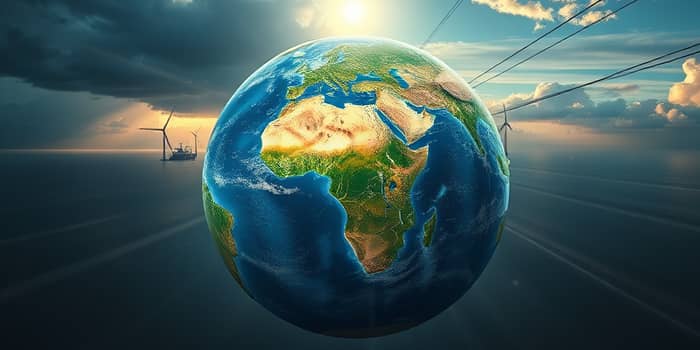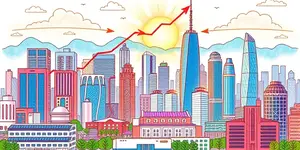
Global conflicts in 2025 have triggered a profound transformation in how energy markets operate. From the dusty corridors of the Middle East to the frigid plains of Eastern Europe, geopolitical tensions are no longer background noise—they are central drivers shaping investment, policy and security. This article explores how armed clashes and strategic rivalries are catalyzing shifts in both the supply of oil and gas and the accelerated adoption of renewables.
While wars have always influenced the price of crude, today’s interconnected markets and urgent climate goals mean that policymakers and industry leaders must juggle more variables than ever before. As nations scramble to protect citizens from price shocks, they simultaneously face public demand for cleaner energy and corporate pressure for stable returns. These layered imperatives have given rise to novel strategies across the globe.
In recent years, governments and industry leaders have reexamined their core energy objectives, driven by geopolitical and economic risks that demand more balanced strategies. The 2025 World Economic Forum report outlines six structural shifts, from the recalibration of energy portfolios to the integration of military readiness in energy planning.
Where once the emphasis centered solely on emissions reductions, today’s policy frameworks weigh energy security and affordability as equally critical goals. National energy plans now include expedited approvals for critical infrastructure, strategic petroleum reserves, and diversification mandates that favor both domestic production and stable import alliances.
Energy ministries are forging closer ties with defense counterparts, recognizing that pipelines and power grids are as much targets as airports or ports. Scenario planning now routinely factors in conflict escalation, cyber threats, and even climate-induced disasters that can intersect with military flashpoints.
The ongoing Israel-Iran confrontation has injected fresh volatility into global oil markets. Supply routes through the Strait of Hormuz—responsible for roughly 20% of global exports—face persistent risks tied to physically vulnerable chokepoints, prompting coordinated naval deployments from multiple powers to ensure passage.
In Europe, policies restricting Russian pipeline gas have solidified higher gas prices, encouraging importers to pursue liquefied natural gas (LNG) terminals, renewables and interconnectors. Despite sanctions, most energy commodities continue flowing, highlighting the adaptability of global supply chains even amid political friction.
China has taken these lessons to heart, accelerating its decarbonization agenda to reduce reliance on external fuel supplies. Ambitious net-zero pledges have moved up timetables, with rapid expansion in solar, wind, electric vehicles and battery storage. These efforts are designed not only for climate impact but also to insulate China from the swings of fossil-fuel markets.
Beyond physical disruptions, market psychology plays a pivotal role. Even limited military strikes or political threats can trigger a psychological pricing premium persists in futures trading, adding a risk-on or risk-off element that inflates price volatility.
After a stretch of underperformance, energy equities have rebounded strongly as crude and natural gas prices climbed. Institutional investors are increasingly adopting a dual approach: allocating to oil and gas majors for short-term stability while channeling capital into clean energy startups and infrastructure for long-term growth.
This “hedged” investment strategy is mirrored in sovereign funds and pension portfolios worldwide. By balancing stakes in pipelines and solar parks, investors aim to safeguard returns against the twin threats of conflict-induced shortages and regulatory shifts toward carbon neutrality.
Paradoxically, the specter of war is proving to be a catalyst for clean energy. Global installation of renewables reached 585 GW last year, a record pace that underscores how distributed renewables is making energy systems more resilient against centralized supply shocks and geopolitical blackmail.
Governments are boosting subsidies, streamlining permitting and forging cross-border grids to integrate more wind and solar capacity. The International Renewable Energy Agency reports that countries with robust renewables programs are less susceptible to fossil-fuel price swings, creating both environmental and security dividends.
The shifting landscape has produced clear winners and losers in geopolitical influence. Traditional hydrocarbon-exporting nations now face growing competition from countries that export green technology and expertise.
Fossil-fuel exporters contend with both supply-chain disruptions and long-term demand uncertainty, while renewables leaders leverage manufacturing capacity and R&D breakthroughs to enhance their strategic standing. Domestic production of photovoltaic panels, electrolyzers and battery cells is becoming as much a matter of national security as it is of economic policy.
The energy sector’s evolving response to global conflict embodies a complex balancing act. Physical supply risks and market psychology have thrust new urgency into security and sustainability imperatives alongside climate goals. At the same time, the rapid expansion of clean energy capacity offers a path toward greater resilience.
As we move past 2025, stakeholders must remain nimble, guarding against short-term disruptions while sustaining momentum toward net-zero targets. The convergence of security and sustainability imperatives promises to reshape not only how energy is produced and consumed, but also how nations define their geopolitical power in an increasingly contested world.
References













